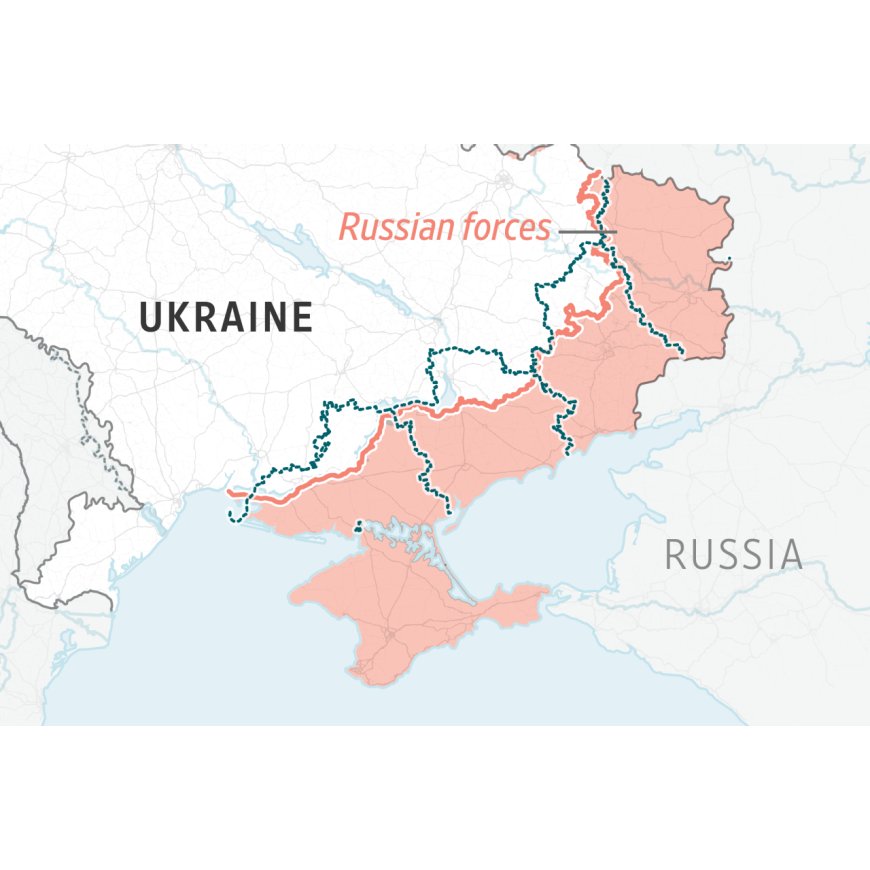At the Heart of the Alaska Summit: Four Maps Reveal the Ukrainian Territory Putin Covets—and What’s at Stake for Trump’s Negotiations
Four revealing maps expose the Ukrainian territories at the center of Trump-Putin talks in Alaska, highlighting Russia’s long-held ambitions in the south and east. An in-depth analysis of the regions, the stakes, and what this means for peace and sovereignty.

As world leaders settle into the Alaska summit, all eyes are fixed not only on the room where President Trump and President Putin meet—but on the maps that quietly underline what’s truly on the line. In four detailed visualizations, they lay bare a geopolitical tug-of-war: the land in eastern and southern Ukraine that Putin has long coveted, and that could form the centerpiece of any peace deal—if such a deal is even possible.
What the Maps Show—and Why It Matters
According to recent reporting, the key regions under scrutiny include Donetsk, Luhansk, Zaporizhzhia, Kherson, and Crimea. Russia already fully occupies Crimea and nearly all of Luhansk; it holds substantial but contested parts of Donetsk, Zaporizhzhia, and Kherson—areas critical to its strategic and economic goals in Ukraine The Wall Street Journal.
These are not merely lines on a map. They symbolize control over lifelines: Russia’s desire for a land corridor to Crimea, its ability to choke Ukraine’s access to southern ports, and its broader ambitions to seal Ukraine’s fate geopolitically.
The Broader Backdrop: Summits, Strategy, and Stakes
1. What Russia Is Asking For
Russia has long signaled that success hinges on international recognition of its control over occupied territories—plus Ukraine's renunciation of NATO ambitions and lifting of Western sanctions Wikipedia+1. These conditions haven’t shifted.
2. Trump’s Approach—Land Swap as a Path?
Donald Trump has floated the idea of a “land swap,” a concept that raises as many questions as it suggests concessions. He claims he’s not negotiating on Ukraine’s behalf but rather working to get Ukraine to the table News.com.auThe Washington Post. If a swap materializes, it could freeze the current de facto lines—but at what cost?
3. Ukraine’s and Europe’s Reaction
Unsurprisingly, Ukrainians and their European allies are highly skeptical. Residents, especially in front-line cities like Zaporizhzhia, express deep emotional rejection of any concession—fearing loss of identity, forced assimilation, and overwhelming human rights abuse The Guardian. European governments have made it clear: no territorial decisions without Ukraine’s involvement New York Post.
Why This Challenges Peace and Principles
-
Human Cost: Real people stand to lose much more than just land. Ceding territory risks altering demographics, suppressing dissent, and entrenching oppression.
-
Security Realpolitik: Giving up territory may drive a temporary ceasefire—but it leaves Russia permanently better positioned, undermining Ukraine’s sovereignty and future security.
-
Diplomatic Integrity: Negotiations without Ukraine mirror bygone power games. Crafting the future of a nation in its absence is a recipe for fragility.
What Comes Next?
-
Watch for Summit Outcomes
Does the Alaska summit include a ceasefire framework? Are land swaps framed as mutual and conditional? Will Ukraine and its leaders be factored into follow-up talks? The Washington PostNew York PostIndiatimes -
Monitor Ground Reality
Russia continues its push in places like Donetsk (e.g., near Dobropillia) possibly timed to influence talks. Any gains could reshuffle what’s negotiable Wikipedia. -
See How Global Players React
Is Europe preparing to impose stronger sanctions if land concessions are made? Will Ukraine dig in its diplomatic heels or seek new backers for security? New York Post
Final Thoughts
These maps do more than clarify territory. They trace a global moral crossroads. On one side: the attempt to freeze a brutal conflict, stabilize a region—even if by compromise. On the other: the risk of legitimizing aggression, of sacrificing justice for diplomacy. The Alaska summit’s outcome will test not just peace, but the principle that sovereign futures can't be bargained without those who call that land home.








